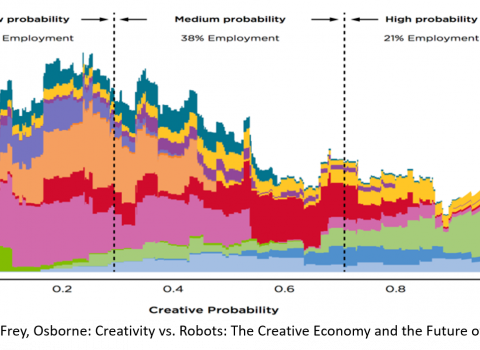Artificial Intelligence Can Reduce Food Wastage
We met Felix Wick (Vice President, Data Science in Blue Yonder GmbH) during the EuroSciPy 2018 conference in Trento. We talked about A.I. in the retail market and the importance of Python among all the languages available
How can AI and data science be useful in the retail system?
A.I., data science and machine learning can be used to help humans make better decisions. This means they can support people in doing those jobs that involve planning, system ordering, price setting, customer targeting and all the situations where you have to make a lot of different decisions. If you think about the ordering process or price setting in the supermarket chain, you have to do millions of decisions each and every day. This […] cannot be done by humans and definitely it cannot be done accurately. […] So, you have a need for automation because you have a lot of different influencing factors. The main problem of human thinking is that it’s very difficult for people to deal with decisions under uncertainty, so a probabilistic approach, like machine learning, is a very good solution for that.
So, if we embrace this concept, we could get rid of human decision making altogether.
It’s not like that. It’s more like supporting and helping people. Letting computers make the boring decisions so humans can concentrate on the strategic and tactical decisions: […] on what the costs are, on what is important for the business and then to use the probabilistic models to make the right decisions under uncertainty [conditions], with a high degree of automation. This is basically the way it goes, and I’m pretty sure that most of the businesses in a few years would be steered in that way.
So wastage, instead of humans, could be something we can get rid of thanks AI.
This is a really nice aspect of machine learning. A lot of different things are thrown away by supermarkets each and every day, and a lot of this wastage can be reduced just by a better demand forecasting. So if you know, within some uncertainty, how much of a product will be sold and how much will be thrown away after a few days, machine learning can be helpful and reduce wastage quite a lot […]. Usually you have to find the sweet spot between ordering too much or too little. You don’t want to find yourself in the situation where your bananas are already sold out in the afternoon if many people come after work in the evening. This means that you have to order more, but on the other hand you don’t want to order so much that you have to throw it away on the next day […]. Usually supermarkets order too much because otherwise they would be losing money. So, in that sense, they generate wastage for the sake of profit. This is a nice aspect here: with machine learning you could give companies even more profit without getting into this high wastage situation.
Is weather forecasting useful in the retail system?
Weather forecasting is also very important. Think about the first barbecue weekend of the year, for example, that’s the time when you would need the meat in the supermarket. […]Or the first snow when everybody would go and buy winter stuff for cars […]. The only issue is that you can only react on short notice, because weather forecasts are accurate only for a few days.
What kind of data do you use?
Data collecting is mostly done by customers. […] We then enrich those with information such as weather events and other data, also coming from other sources like internet or other data providers.
When you talk about AI-driven decisions, do you refer also to customer decisions?
Customer targeting is an example of that. Think about coupons made for specific individuals: if they get a coupon they will come to the store to get a special discount, otherwise they won’t. This can also be used for evil purposes of course, think of the of the recent rumors about the elections in the US. […] This is a is a very powerful tool but of course you have to somehow control it.
We are at EuroSciPy 2018 in Trento. Why is Python the most used language for so many scientists and researchers?
Python is the language of choice for machine learning and production because with python you can get rid of the so-called two language problem. Let’s look at the case of an r&d team that works with a highly mathematical programming language, which you would later not use in production. In production, you need to have a system that is very robust, never goes down, where everything is in place, and for such a system usually these mathematical programming languages would not be your first choice. On the other hand, the programming languages which you would use for production are not the ones which would use for r&d, and Python is a solution that lets you do both. That means you don’t have to rewrite your protocol again after you have done your modeling, but you can just do the prototyping and the production system with the same code.

